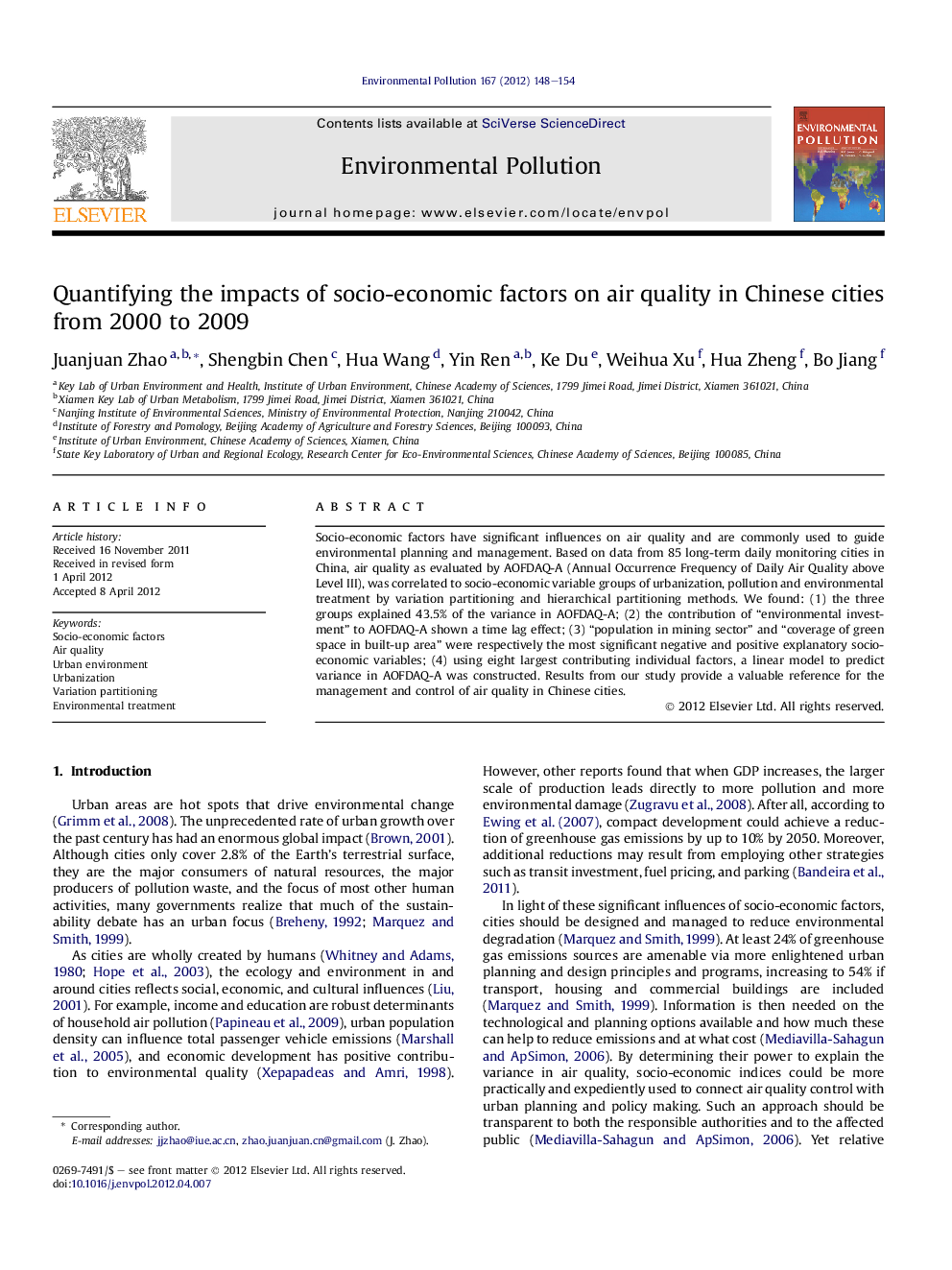| کد مقاله | کد نشریه | سال انتشار | مقاله انگلیسی | نسخه تمام متن |
|---|---|---|---|---|
| 4424564 | 1619205 | 2012 | 7 صفحه PDF | دانلود رایگان |

Socio-economic factors have significant influences on air quality and are commonly used to guide environmental planning and management. Based on data from 85 long-term daily monitoring cities in China, air quality as evaluated by AOFDAQ-A (Annual Occurrence Frequency of Daily Air Quality above Level III), was correlated to socio-economic variable groups of urbanization, pollution and environmental treatment by variation partitioning and hierarchical partitioning methods. We found: (1) the three groups explained 43.5% of the variance in AOFDAQ-A; (2) the contribution of “environmental investment” to AOFDAQ-A shown a time lag effect; (3) “population in mining sector” and “coverage of green space in built-up area” were respectively the most significant negative and positive explanatory socio-economic variables; (4) using eight largest contributing individual factors, a linear model to predict variance in AOFDAQ-A was constructed. Results from our study provide a valuable reference for the management and control of air quality in Chinese cities.
► Urban air quality as evaluated by AOFDAQ-A was correlated to socio-economic variable groups.
► Variable groups explained 43.5% of the variance in AOFDAQ-A.
► “Coverage of green space in built-up area” was the most significant positive variable.
► A linear model to predict variance in AOFDAQ-A was constructed.
► Contributions of 21 socio-economic variables to AOFDAQ-A was quantified.
Journal: Environmental Pollution - Volume 167, August 2012, Pages 148–154